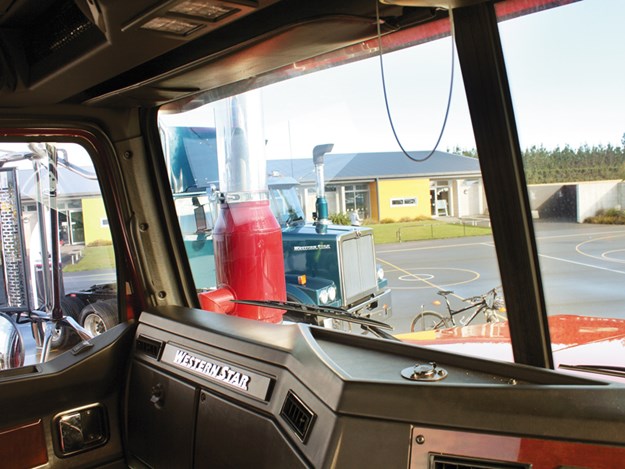Comment: Sharing the road
It happens too often that truckies and cyclists are unable to communicate with each other, misinterpret body language or hand signals and make the wrong decision in manoeuvring
The company I work for recently had an incident where a cyclist, the leader of a group of six, apparently waved a truck on by that had stopped in behind them and had then resumed crawl speed.
The cyclist was actually waving his group into a single file but the driver of the truck thought he was waving him on to turn left in front of the cyclists.
 |
|
The Cycling Action Network runs a campaign called Share the Road, which is supported by the road transport industry
|
This was a simple misunderstanding and one that despite everyone having the best of intentions could have had serious outcomes. Luckily, this time no one was hurt.
This has happened on numerous occasions before. Road users are unable to communicate with each other, misinterpret body language or hand signals and make the wrong decision in manoeuvring.
The other common occurrence is the old go, stop, go, stop you see when people are trying to let other vehicles cross traffic or merge through an intersection only for hesitation as they are unsure whether their intentions have been understood.
From my perspective, working for a major freight company, there is a heightened awareness these days of the importance of sharing the road with other road users and particularly more vulnerable road users such as cyclists.
The Cycling Action Network's Share the Road campaign
The Cycling Action Network runs a fantastic campaign called Share the Road, which is supported by the road transport industry. As they say on their website, Share the Road’s mission is to enable road users’ understanding of each other when sharing the road.
With the number of vehicle trips of all types growing quickly on road corridors that in many cases aren’t really fit for purpose, sharing the road and being considerate of all other road users is more important than ever.
The campaign runs a series of excellent workshops for both cyclists and heavy vehicle drivers to teach both groups of the challenges that the other faces.
The workshops for drivers and transport managers range from everything, from a half-day workshop, where participants are put in the position of those on a bike and understand why cyclists ride in certain places on the road, to 30-minute toolbox meetings where time is short.
For cyclists, the sessions are focussed on gaining confidence around heavy vehicles and learning about the limitations of a truck driver’s visibility and manoeuvrability.
The value of these workshops cannot be understated and I would encourage transport operators to get in touch with the Cycling Action Network and arrange a workshop for your staff.
Awareness is one thing; translating that to outcomes on the road is another. Going back to the point I made earlier, there still exists the issue of communication.
Perhaps, there is scope for the standardisation and publication of a set of hand signals that both cyclists and drivers can easily become familiar with.
I know there already exists hand and arm signals for cyclists riding in a group. The leader holds a clenched fist behind their back to indicate when they are stopping so that those following also know to slow up and stop. There are also signals to indicate an upcoming hazard, right and left turns, etc.
Maybe there is scope for those signals to be more widely used and taught. Surely, with the emphasis now being placed on cycling, it would be prudent for NZTA to look at standardising some basic hand signals and potentially adding them to the road code and publish more widely for drivers to become familiar with them. It’s just a thought.
For more information and to book, visit womenandleadership.co.nz/emergingleaders.html.
Keep up to date in the industry by signing up to Deals on Wheels' free newsletter or liking us on Facebook.




.jpg)


.jpg)









